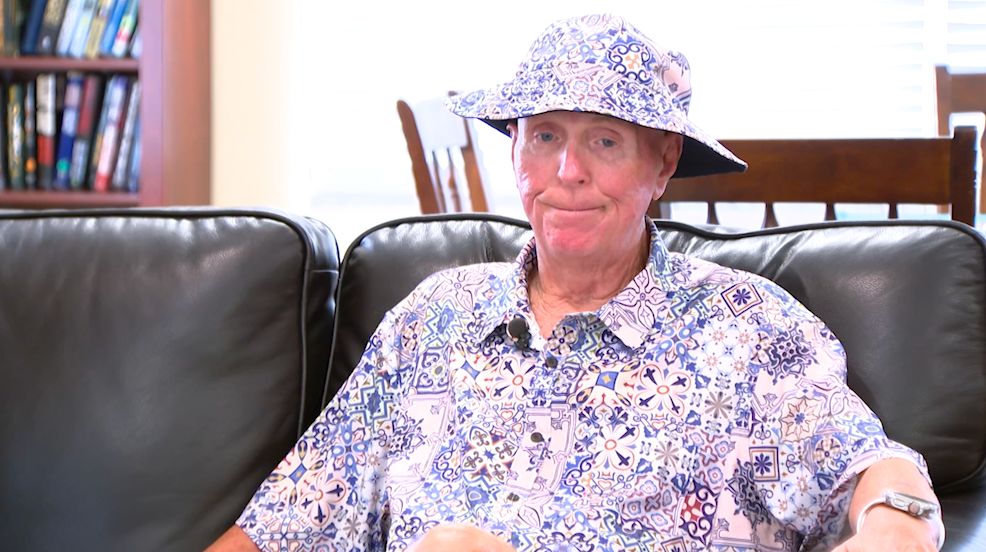ST. PETERSBURG, Fla. — Major League Baseball has been a hot topic in the Tampa Bay area in recent days, especially after the Tampa Bay Rays announced their plans to stay in St. Petersburg and redevelop Tropicana Field.
The land Tropicana Field sits on was also once home to the historically Black, Gas Plant neighborhood, and the team’s location has also sparked discussion on the topic of diversity in baseball.
According to a Major League Baseball Racial and Gender Report Card from The Institute for Diversity and Ethics in Sport at the University of Central Florida, the number of Black players in the league is the lowest it has been since the report card started in 1991.
According to the report card, about 40% of the MLB is made up of players of color — but amongst those, only about 6% identify as Black or African American.
Spectrum News checked with the Tampa Bay Rays about the number of Black players the team has on its roster. Officials didn’t provide a racial make-up of the team, but did send its current roster, which includes several players of color.
Baseball enthusiasts who spoke with Spectrum News said that if you want to find out why you don't see more young Black Americans signing up to play baseball, you need to look at the very beginning, in youth Baseball.
If you ask coach Stephan Knight, throwing and hitting a baseball is only a small part of playing the game.
“You have to be mentally tough in order to play this game here,” he said.
It’s a lesson he’s constantly driving home with the his sons Michael and Stephen Jr., and the players he coaches who are mostly Black and from the inner city.
“We’ve been to many tournaments where we get the looks," Knight said. "We’re told we’re just fast, we’re told we’re just athletes."
Knight said he wants his team to be called baseball players in the predominantly white sport (see page 42 in the PDF below for a breakdown), but sometimes he said they’re called something insulting and cruel: the N-word.
“It happens a lot, actually, and it will happen more than most would like to acknowledge,” he said. “We’re talking the N-word. It’s been multiple times. Both of my kids play on teams ... they can tell you, both of them witnessed or have heard that word playing the game of baseball.”
That’s just one of the reasons why he thinks baseball is striking out with Black children, resulting in less Black players in Major League Baseball.
According to The Institute for Diversity and Ethics in Sport, when the 2023 season kicked off, Major League Baseball had a record-low number of Black players.
Knight said that if you add in the price to play and the appeal of other team sports, you’re left with very few young Black players on the diamond.
“We don’t have the representation from college on up,” he said. “Kids like to imitate what they see, and if they’re not seeing us in the major leagues, now it’s, 'I’m gonna go shoot this basketball, I’m gonna go run this football instead of having to deal with being told I’m not good enough to be out here.'”
Some former major league players like Mark Whiten say the representation people see on TV can distort the severity of the issues that are discouraging young Black Americans from playing baseball, as many Black players in the major leagues come from Latin American countries.
Across the overgrown field, just a few feet from a dilapidated bench and high grass at a city-owned park in Tampa’s inner city, Spectrum News found Whiten, a former professional player and current youth baseball coach.
“My gift was throwing," said Whiten, who played in the major leagues for 11 years. "Wasn’t nobody taking no extra base on me. So that was a plus for me. That’s what I brought to the game."
It’s a game that looked a lot different when he started playing professionally back in the early 1990s. According to UCF's The Institute for Diversity and Ethics in Sport, 1991 had the highest percentages of Black Major League baseball players on record at 18%.
“Back then like coming up with the Blue Jays, it was like you went to spring training all you saw was us,” Whiten said. “And of course, you still had your Latin players, but it was more of Blacks. You would have seven or eight Blacks on a team at every level of their organization.” Players like Barry Bonds, Hank Aaaron, and Willie Mays to name a few.
Whiten said the low number of current Black MLB players isn’t the only curveball when it comes to diversity in the sport.
“Even if you look at the coaching staff in the major leagues, you don’t see a lot of us getting those jobs," he said. "Why? We have the experience, no doubt about that."
But Whiten said he still has hope, and that’s why he’s constantly scouting young Black players.
Knight said he feels the same way.
“Seeing them from 3 or 4 years old, seeing them years later ... 'Coach, I just hit a home run,' or 'Coach, I just made the varsity team.' That keeps me optimistic,” he said.
Correction: The data on the amount of Black players in Major League Baseball has been updated to reflect when the The Institute for Diversity and Ethics in Sport started its Racial and Gender report Card in 1991.









